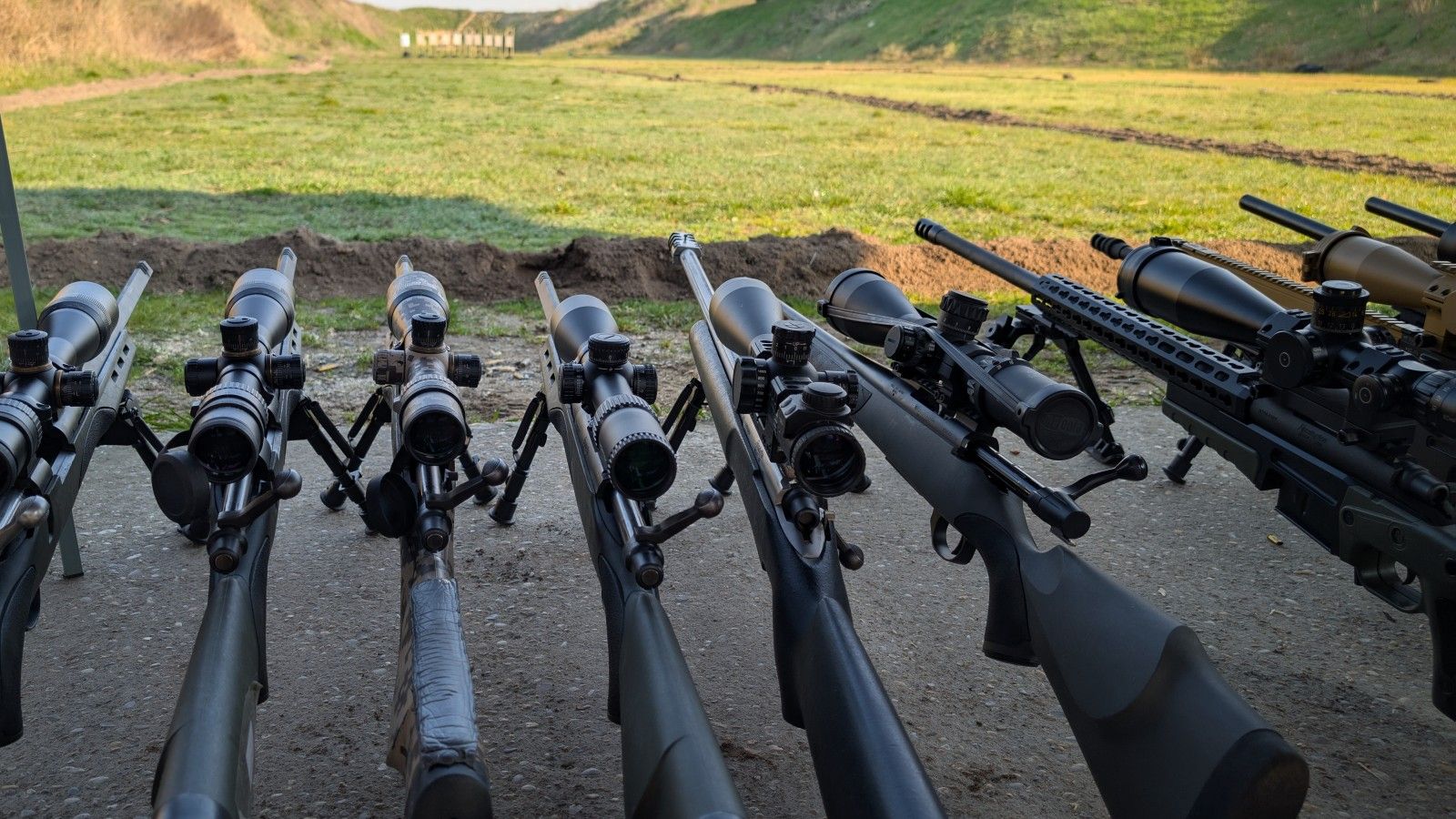Get the weekly SPARTANAT newsletter.
Your bonus: the free E-Book from SPARTANAT.

How does one become a sniper? Is it when you hit targets at long distances? We wanted to know and try it out for ourselves. But one step at a time. In early April, we attended the Sniper 1 course at the TACTICAL COMBAT ACADEMY (TCA) in Slovakia at the Zohor shooting range.
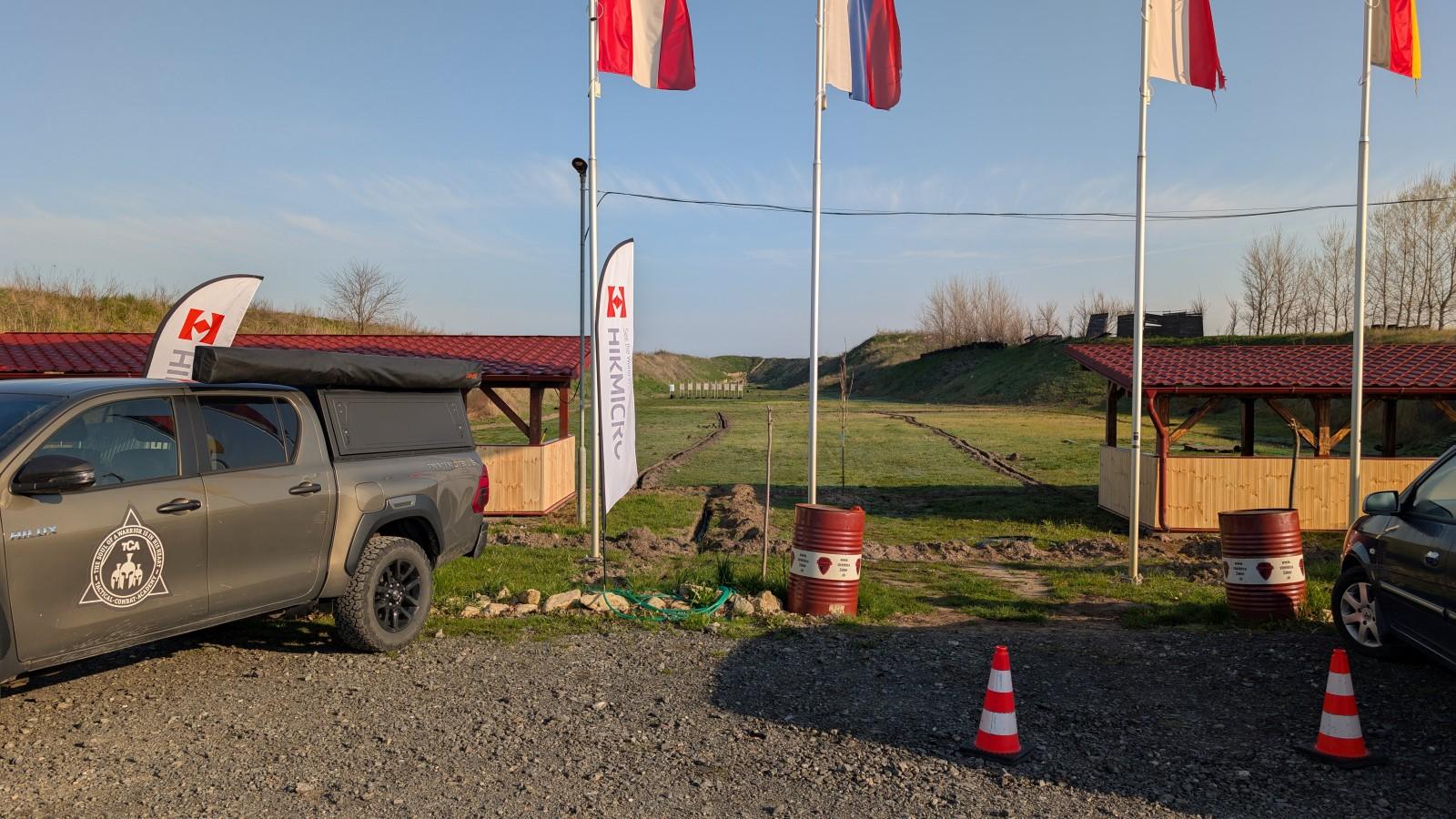
For us, the journey from Vienna is convenient, just over an hour's drive and we are there. Upon arrival, it's time to register, and then we head to the shelter, where the action will later take place.
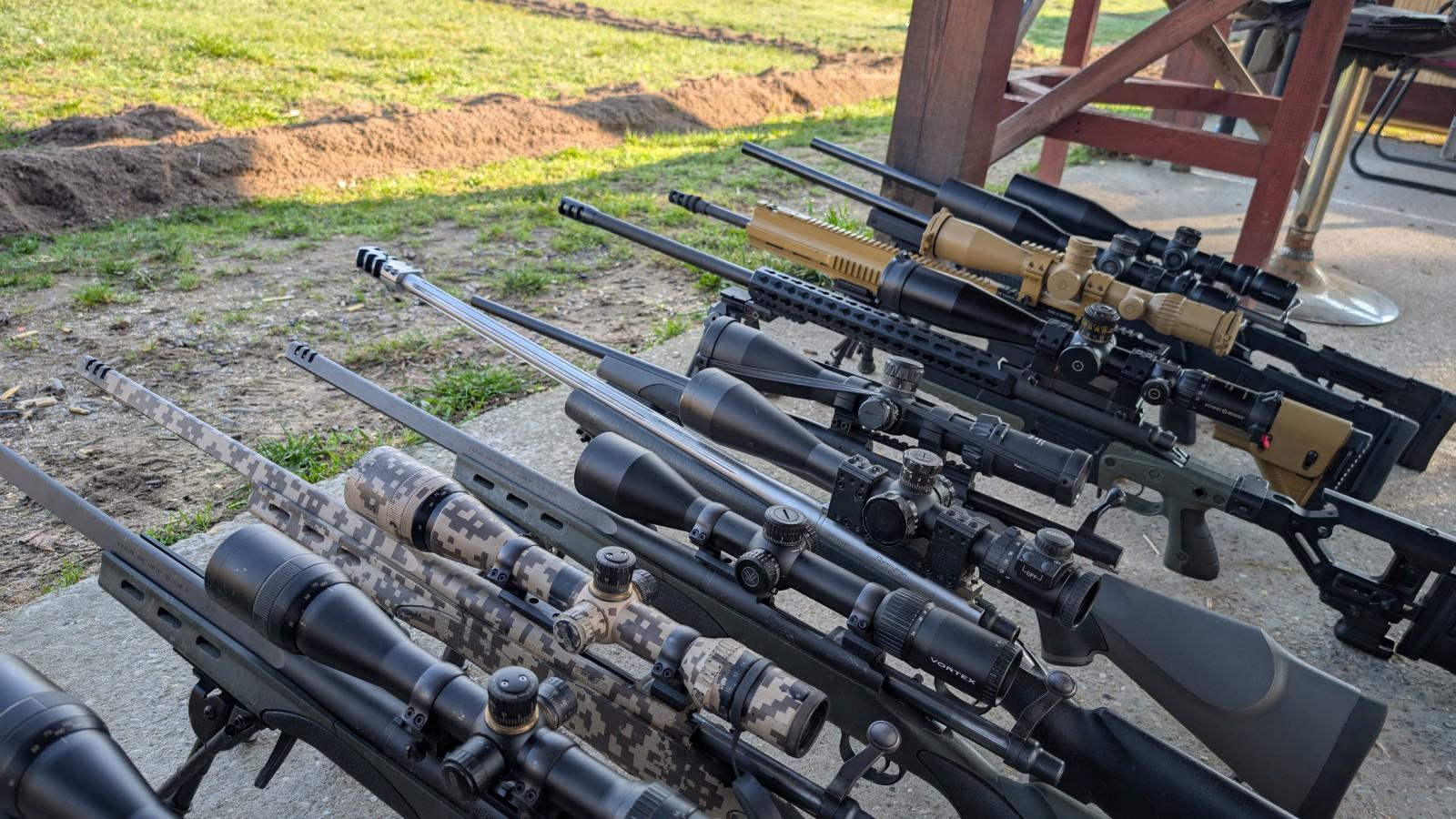
We are immediately greeted with an impressive lineup of rental bolt-action rifles. But before we can start, there's a theory session first.

The course instructor is Michal Ďurech. Michal is a graduate of the Military Gymnasium in Martin and has completed sniper training with the British special forces. As a combat shooting instructor, he has won several titles, including the Slovak Police Sniper Championship and fourth place at the World Championship. In addition, he has regularly participated in international exercises and courses.
As usual at TCA courses, instruction is mainly in Slovak, with translations provided in German or English by an interpreter. The gentleman on the left in the image is responsible for this.

The first item on the agenda is the theory of calibers and ammunition. What calibers exist, how are they used? The difference between calibers for sports shooters and authorities. There are also some objects to demonstrate different calibers, including special types like armor-piercing and tracer ammunition.
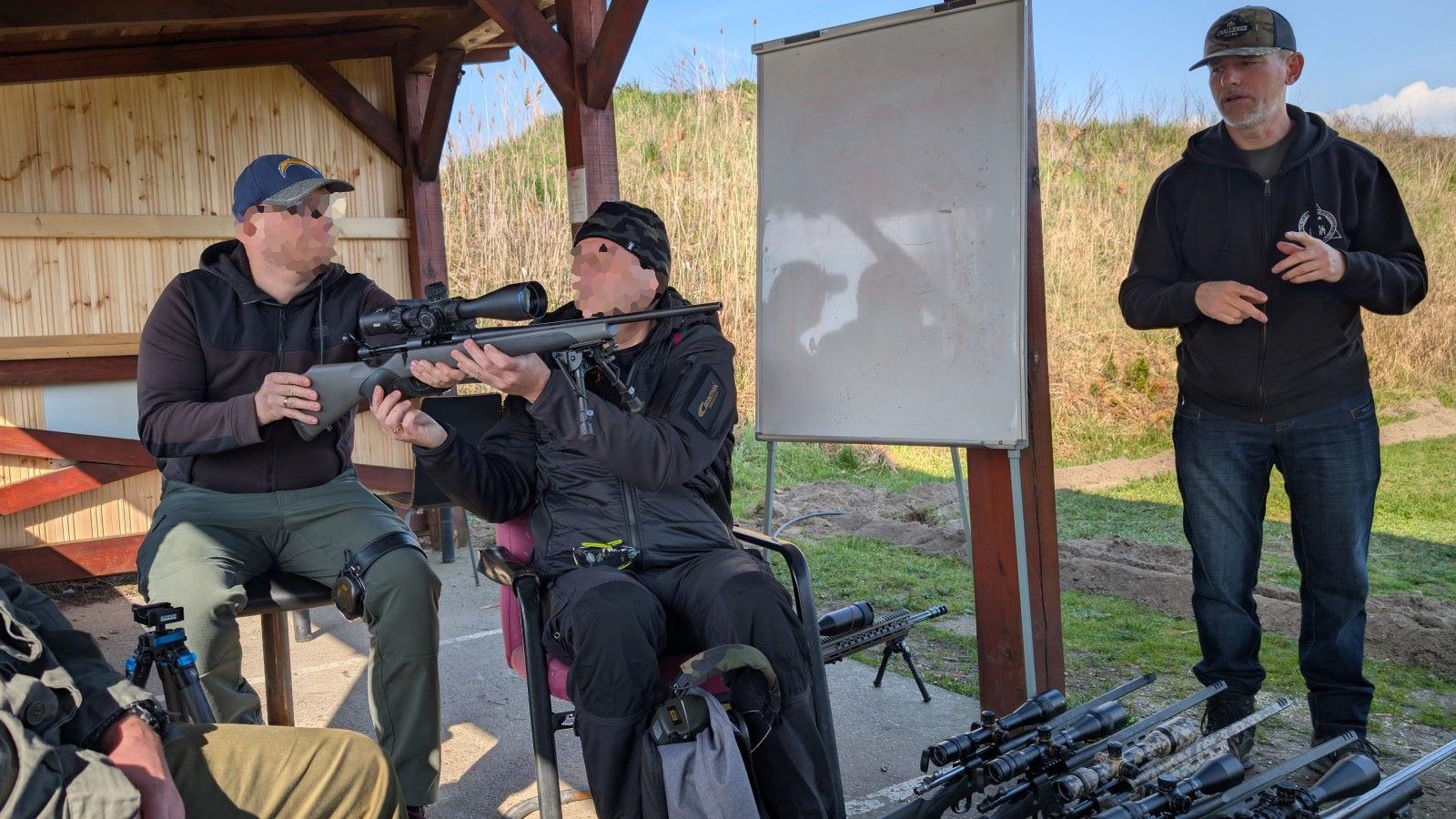
The next topic is the different bolt-action rifles and their optics. How does a rifle for hunters, sports shooters, or authorities differ? How does magnification in the optics affect the shot and what should you watch out for regarding parallax? Additionally, demonstration objects are passed around, so you can feel and experience what’s being discussed.
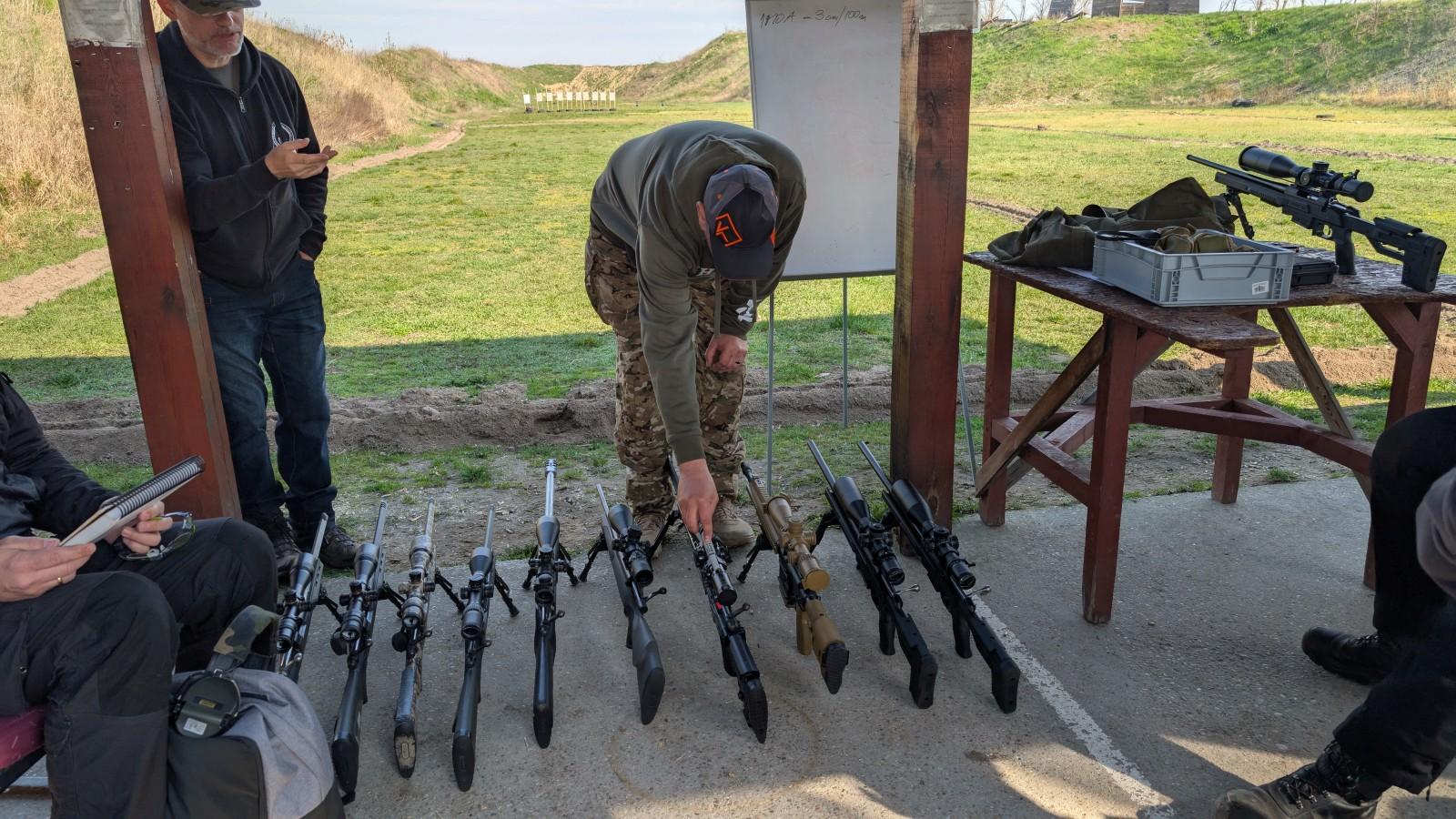
The topic of optics is discussed in great detail. Michal explains the difference between MIL and MOA, various reticles, and what makes a good optic.

Occasionally, a smart book is passed around, which explains these topics with graphics. The book itself is from Michal’s personal collection.
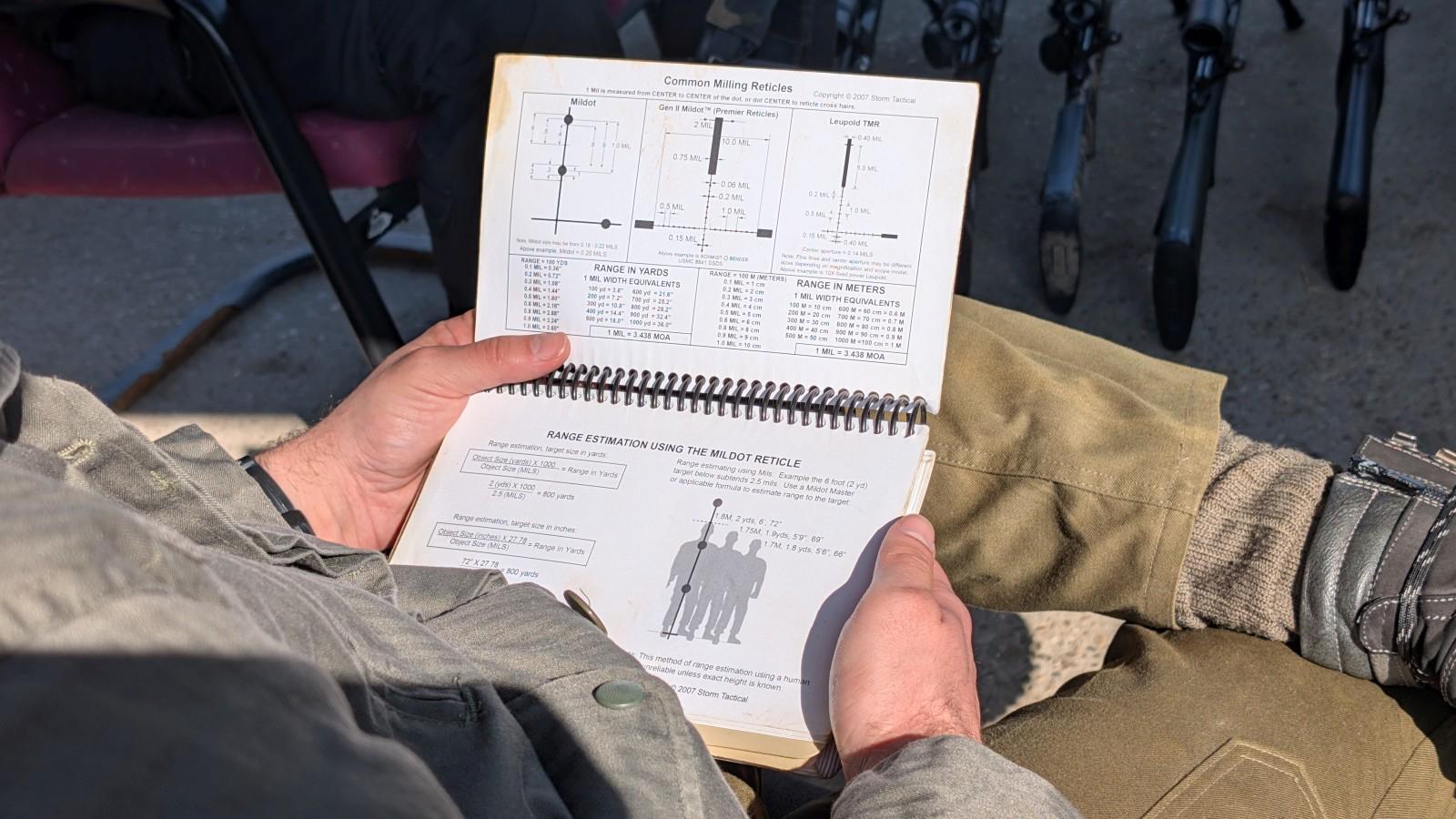
Here is an entry about reticles and how they can be used to calculate the distance and size of people or objects. A lot of theory, and often some math involved, but Michal gives us useful tips and pointers to make it easier to understand.
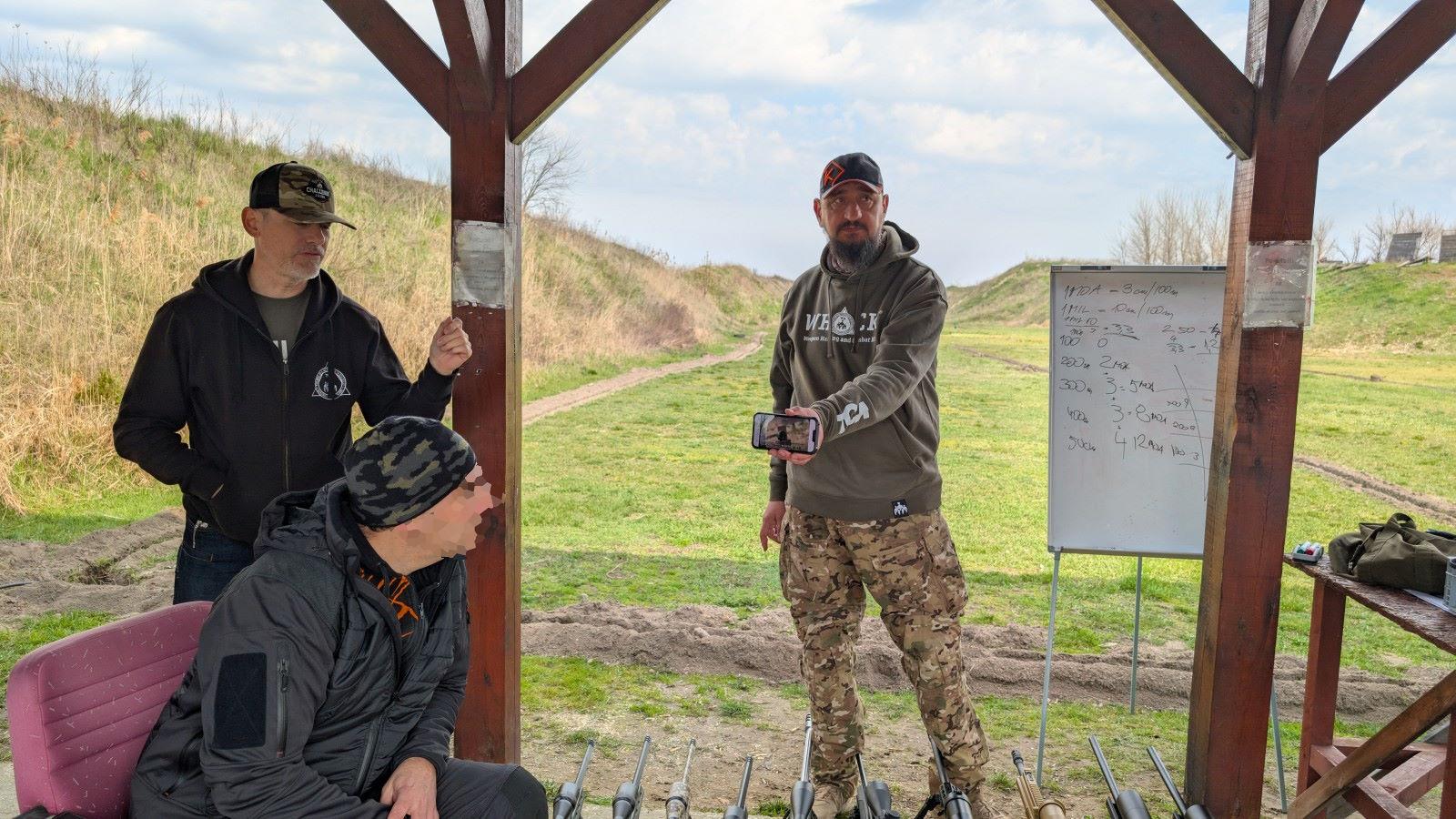
The whiteboard is quickly filled with information. The world of MIL and MOA becomes clearer, and we slowly understand why optics are designed the way they are and which reticle would be optimal for us. What's still missing in the great ballistic formula is the weather. But again, Michal provides insights, showing us a video on how to recognize and interpret wind in the field. He also discusses devices like the Kestrel, which you often see in competition photos of snipers.
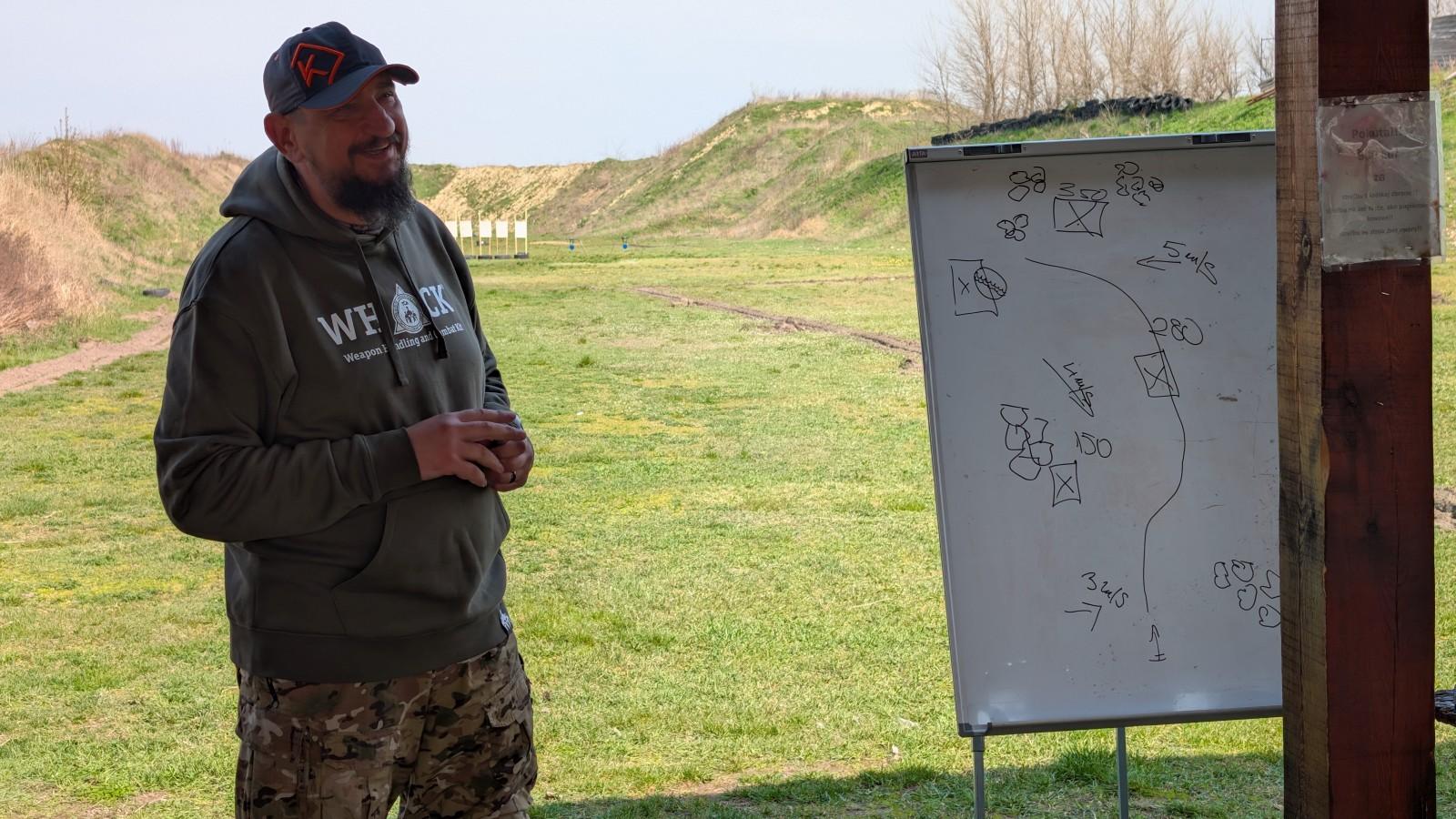
We’ve now learned a lot of theory, so it’s time for practice. But before we begin, there’s a short lunch break. We take the opportunity for a snack because after this, we’ll be shooting continuously until the end of the course.

As the participants slowly prepare, cleaning their shooting glasses and getting their ear protection ready, Michal sets up the targets. The distance is 100 meters for the first exercise.
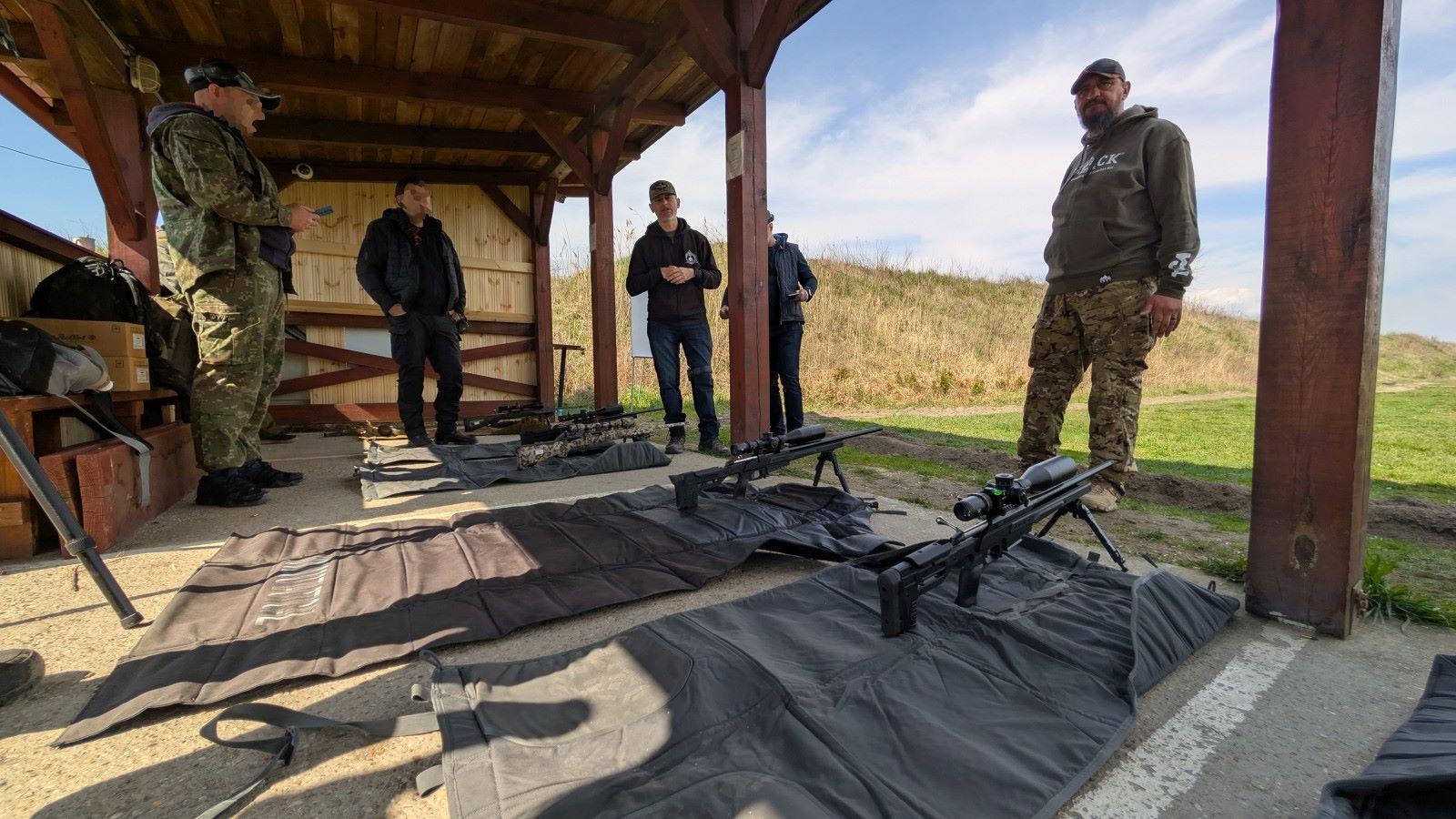
Now we continue. If you didn’t bring your own rifle, you can choose from the rental rifles. All rental rifles are in the 308 Winchester caliber. In addition, there are also HELIKON-TEX Backblast shooting mats to make the ground more comfortable.
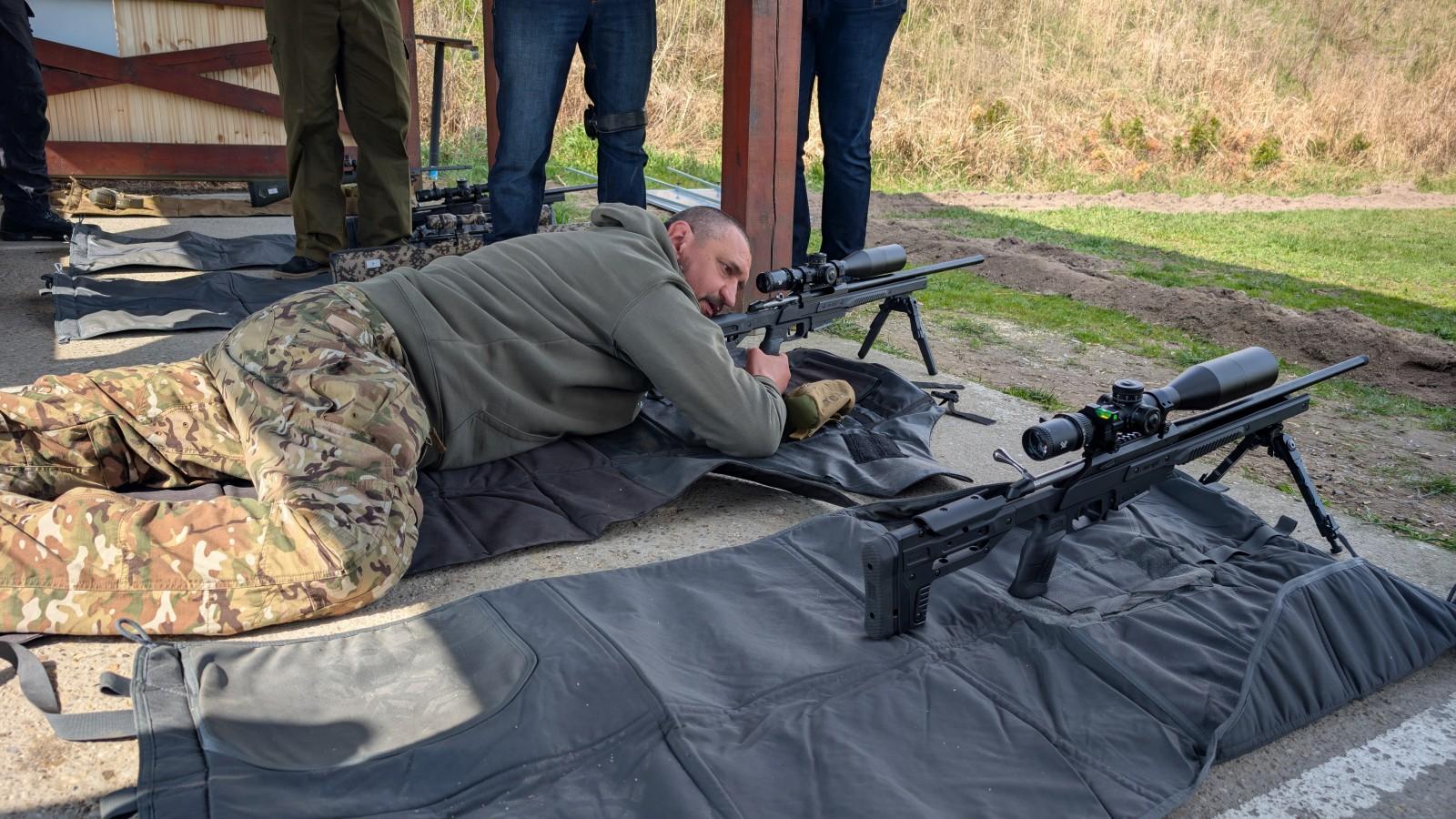
The first exercise is to zero the rifles. Beforehand, we learned how to properly adjust optics, and now we get to apply it. Additionally, Michal shows us the correct posture for shooting while lying down.
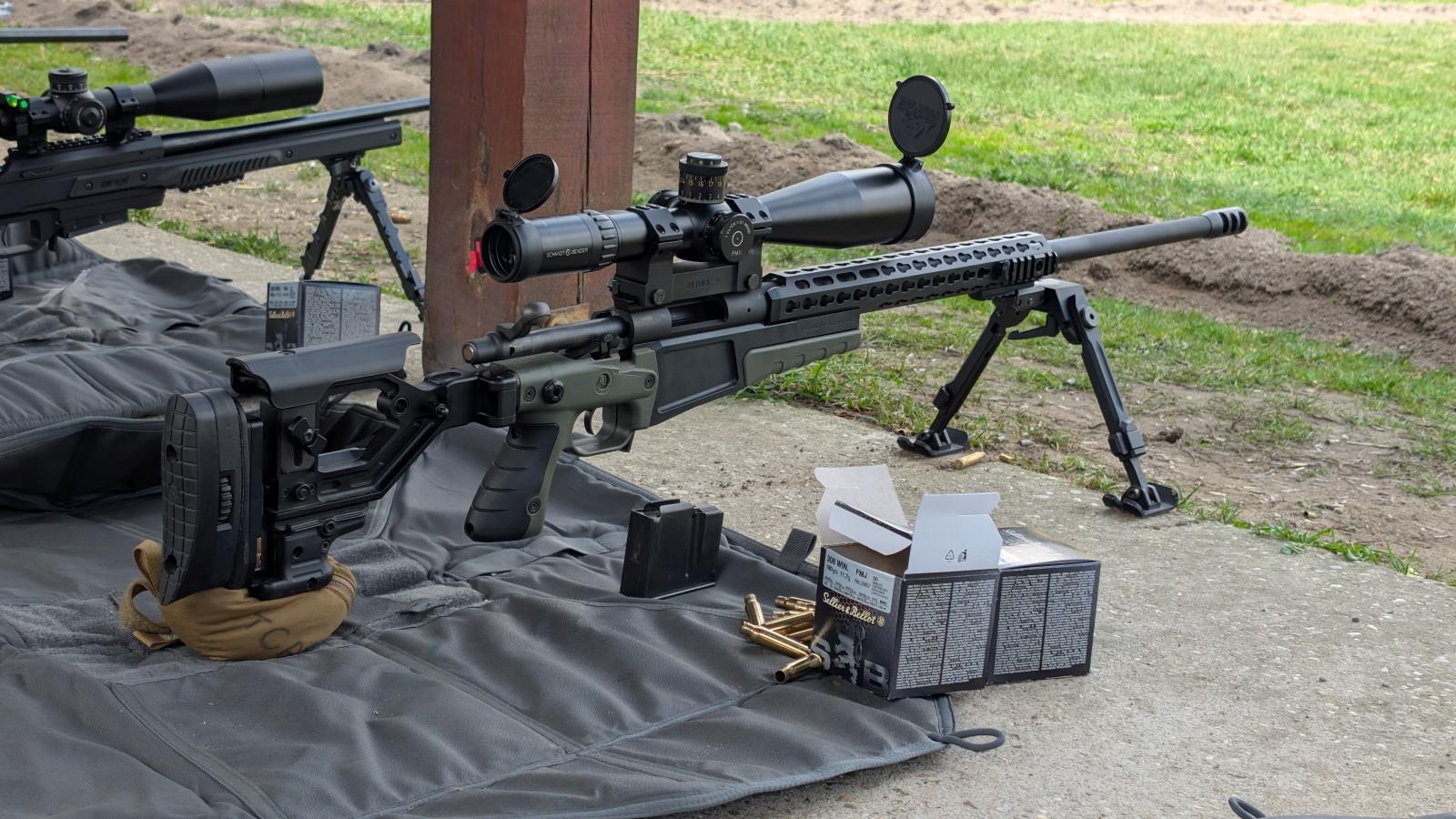
Here is our equipment. It feels like we’ve hit the jackpot. This is a Remington 700 system in an Accuracy International chassis with a Schmidt & Bender PM II scope in MRAD.
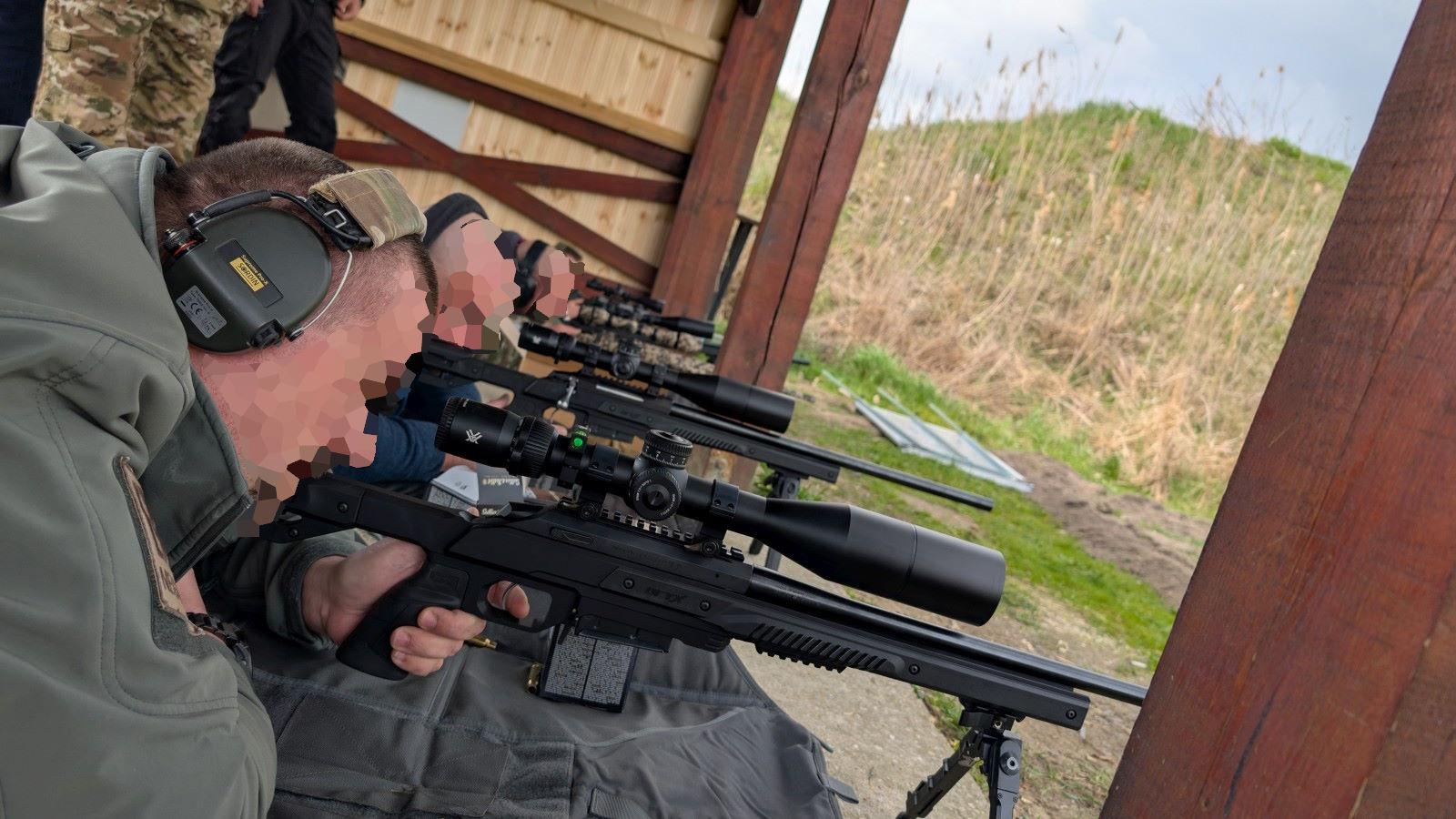
Fire at will – everyone gets started. There’s a lot of shooting going on because none of the rental scopes are zeroed, so they all need to be properly adjusted. Why this is important will become clear after the final exercise of the day.
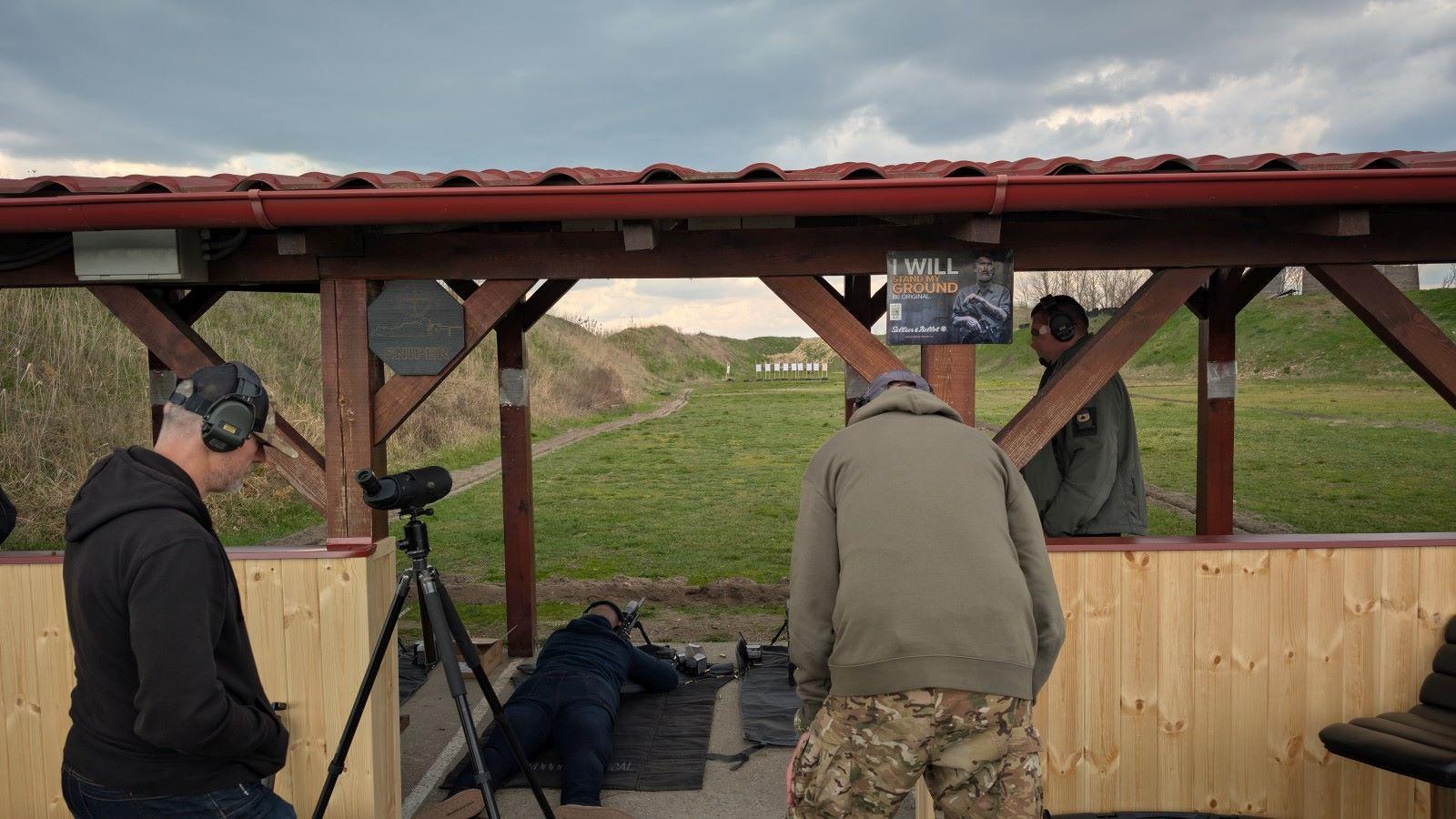
Behind the shooters, Michal stands with a spotter scope. If anyone has trouble, Michal is there to provide assistance. Shooters can also look through the spotter scope if they can’t see their shots through their own scopes.
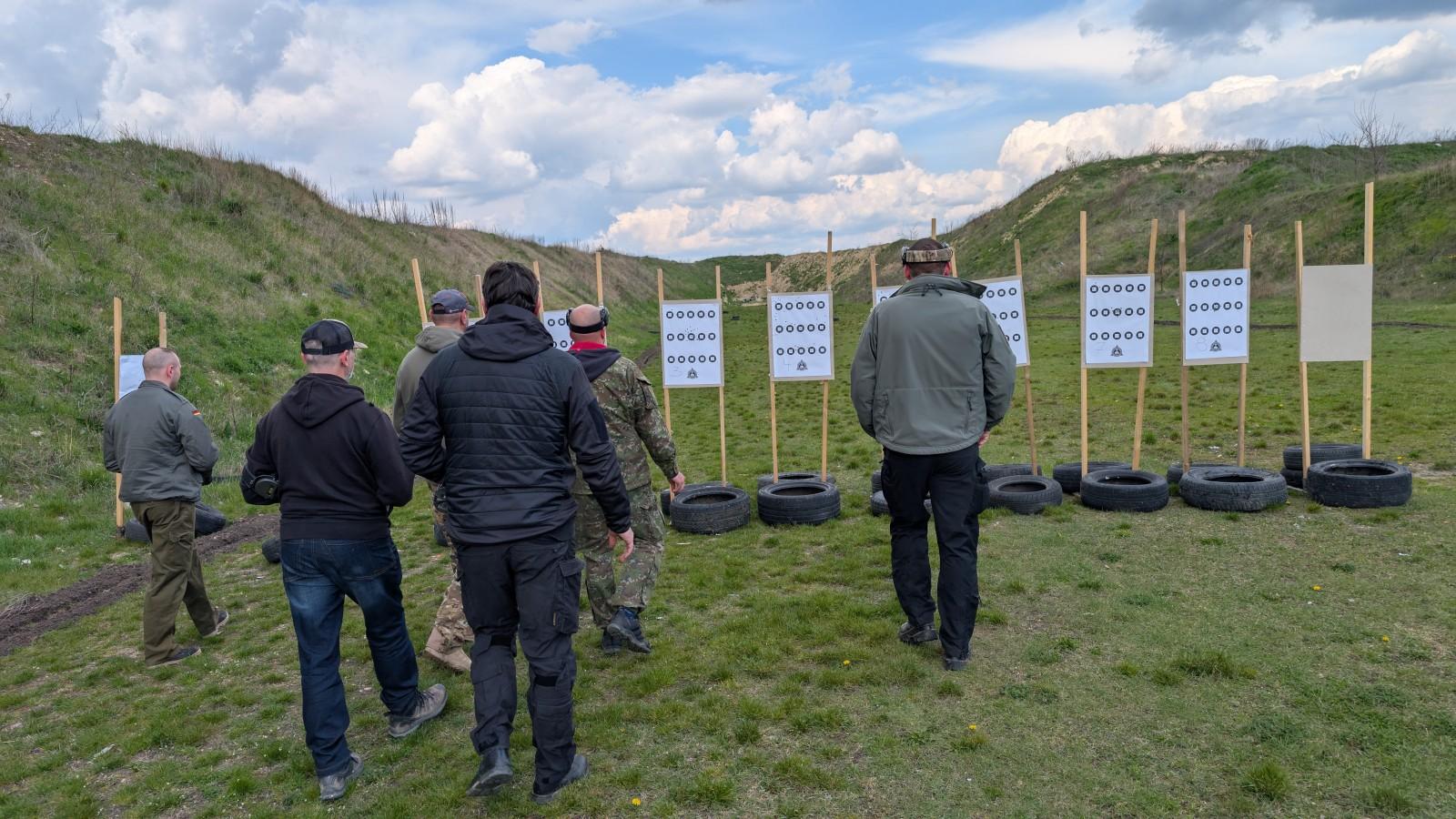
Some shot more, some less. But one thing united us all: we were exhausted, so it’s time to head to the target boards.
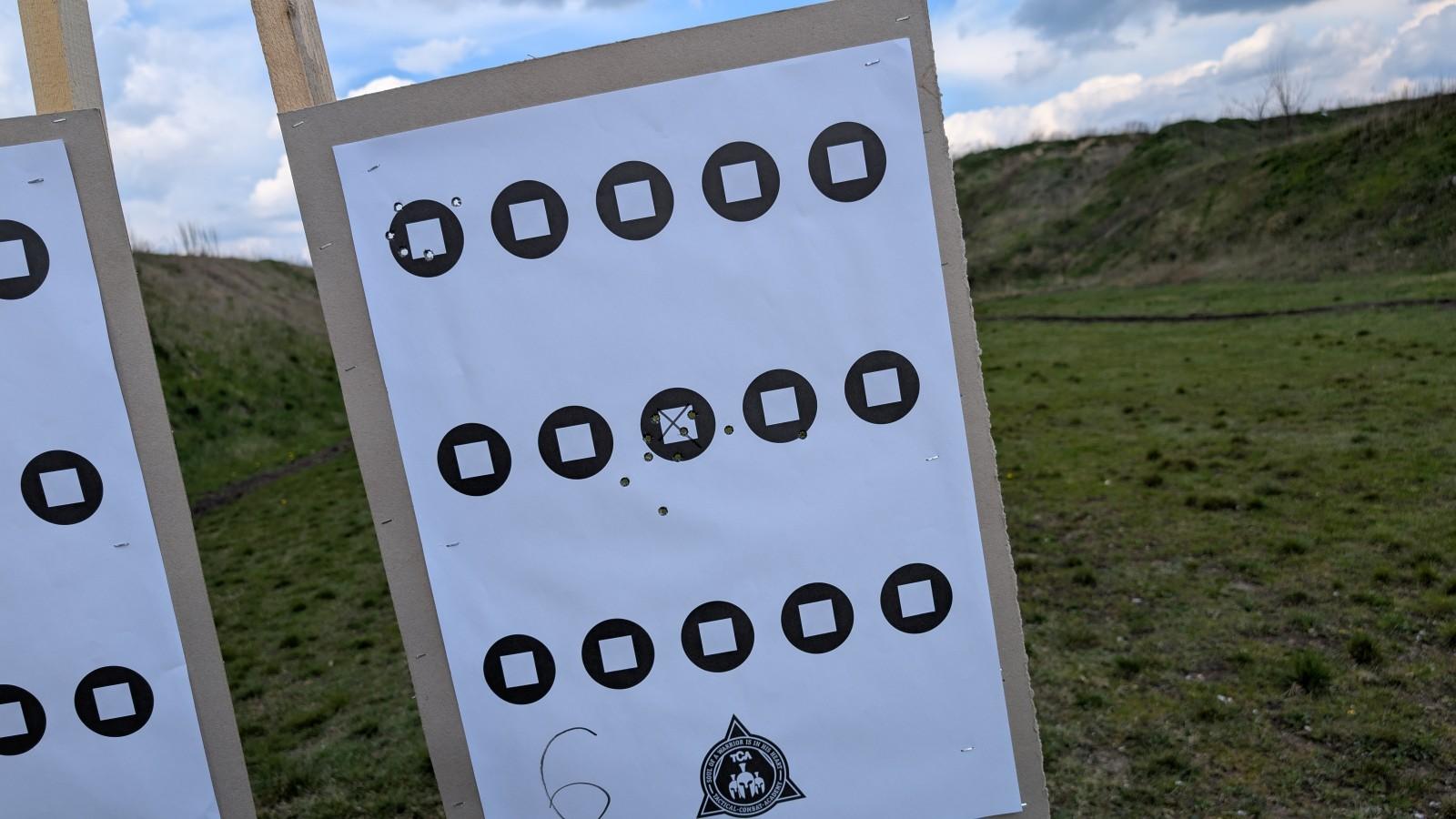
Here is our target. The first target in the center was the one to help us zero the rifle. The target at the top left is for confirming the zero. I’m probably not a sniper yet. But Michal supports us through the learning process. He goes through each target with the participants and provides more tips to correct mistakes. Sometimes it was a trigger pull issue, sometimes the wrong position, or tips on adjusting the optics.
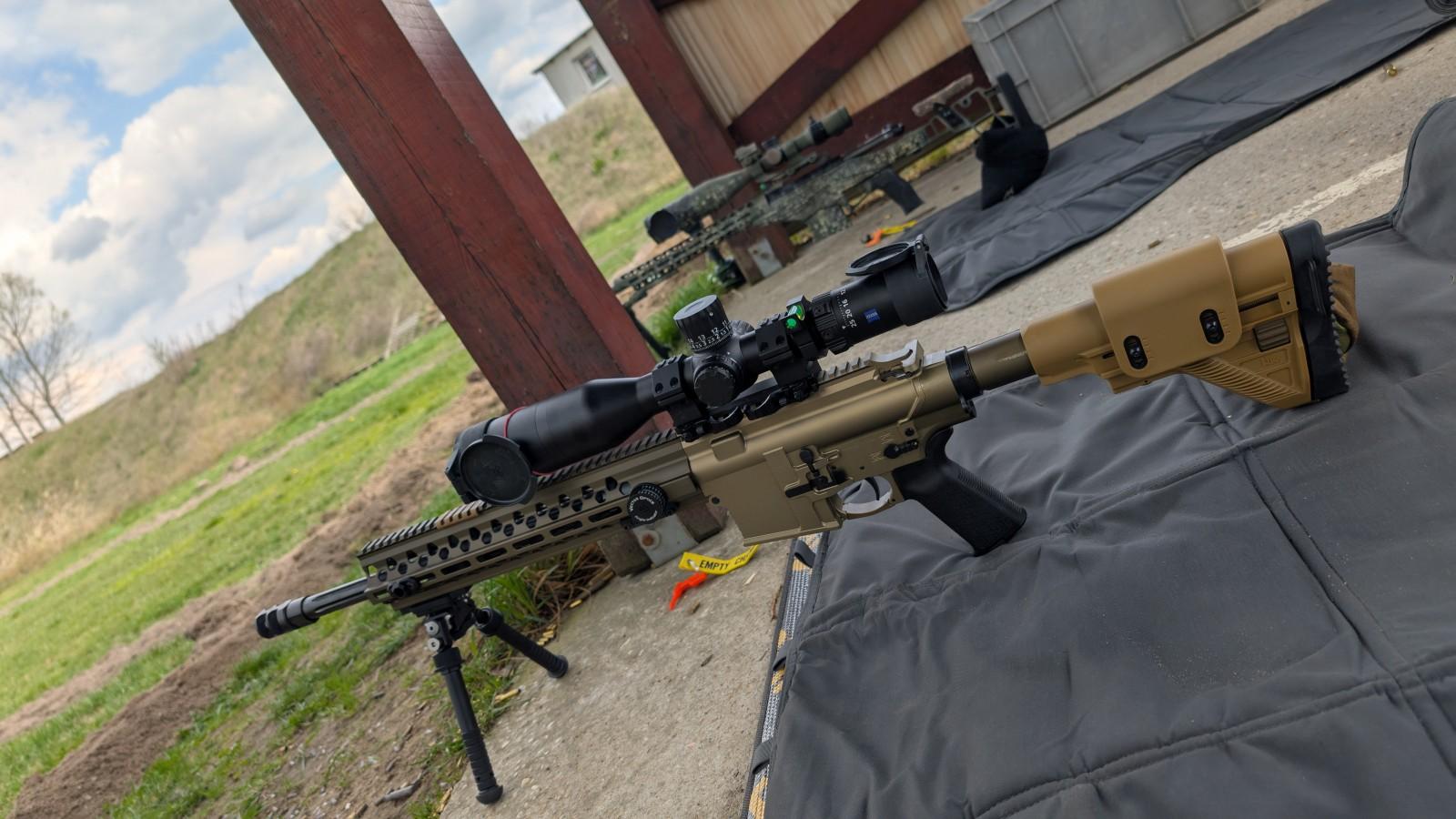
Here are two rifles from participants who brought their own. The target is nearly hole-in-hole, and you can see where the journey is headed.

After the optics were correctly adjusted, it was time to set the turrets to zero so we were ready for the next exercises.
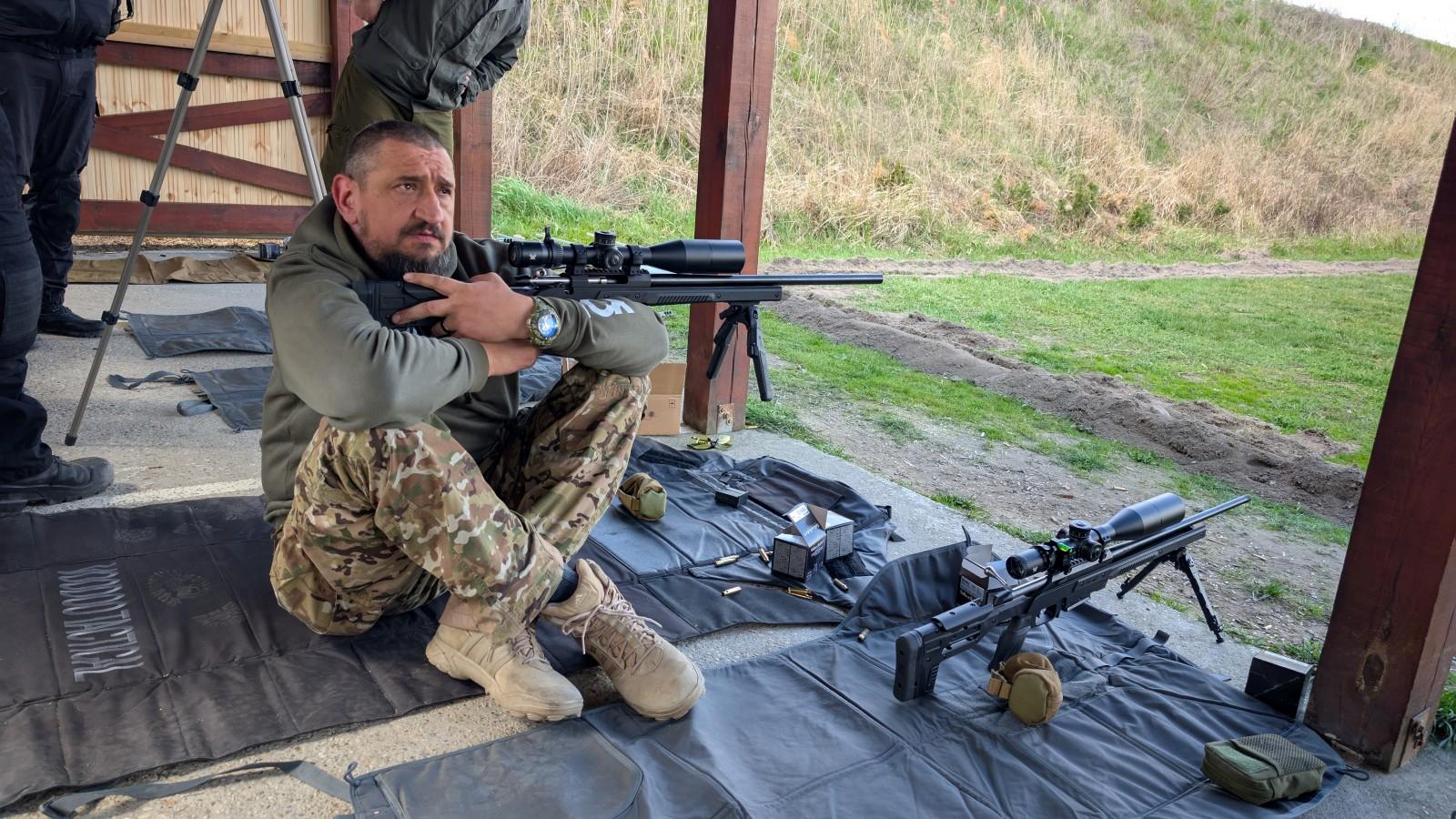
Since we first shot while lying down, now it’s time for sitting positions. Michal shows us some positions and gives tips on how to execute them best.
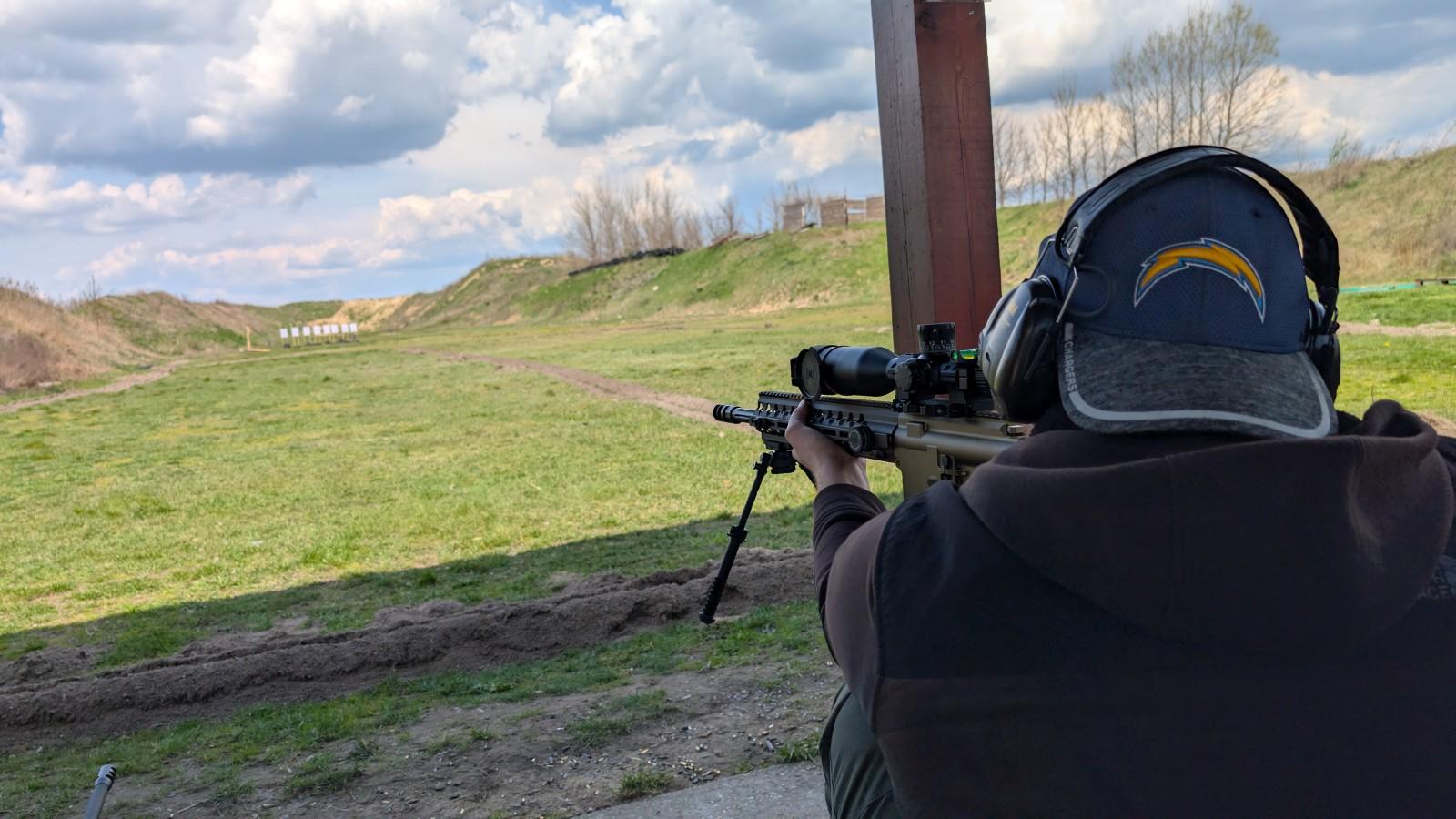
Then it’s our turn again. To make things a bit quicker and easier, we shoot at steel targets. Everyone tries different positions, always accompanied by the pleasant ping sound.
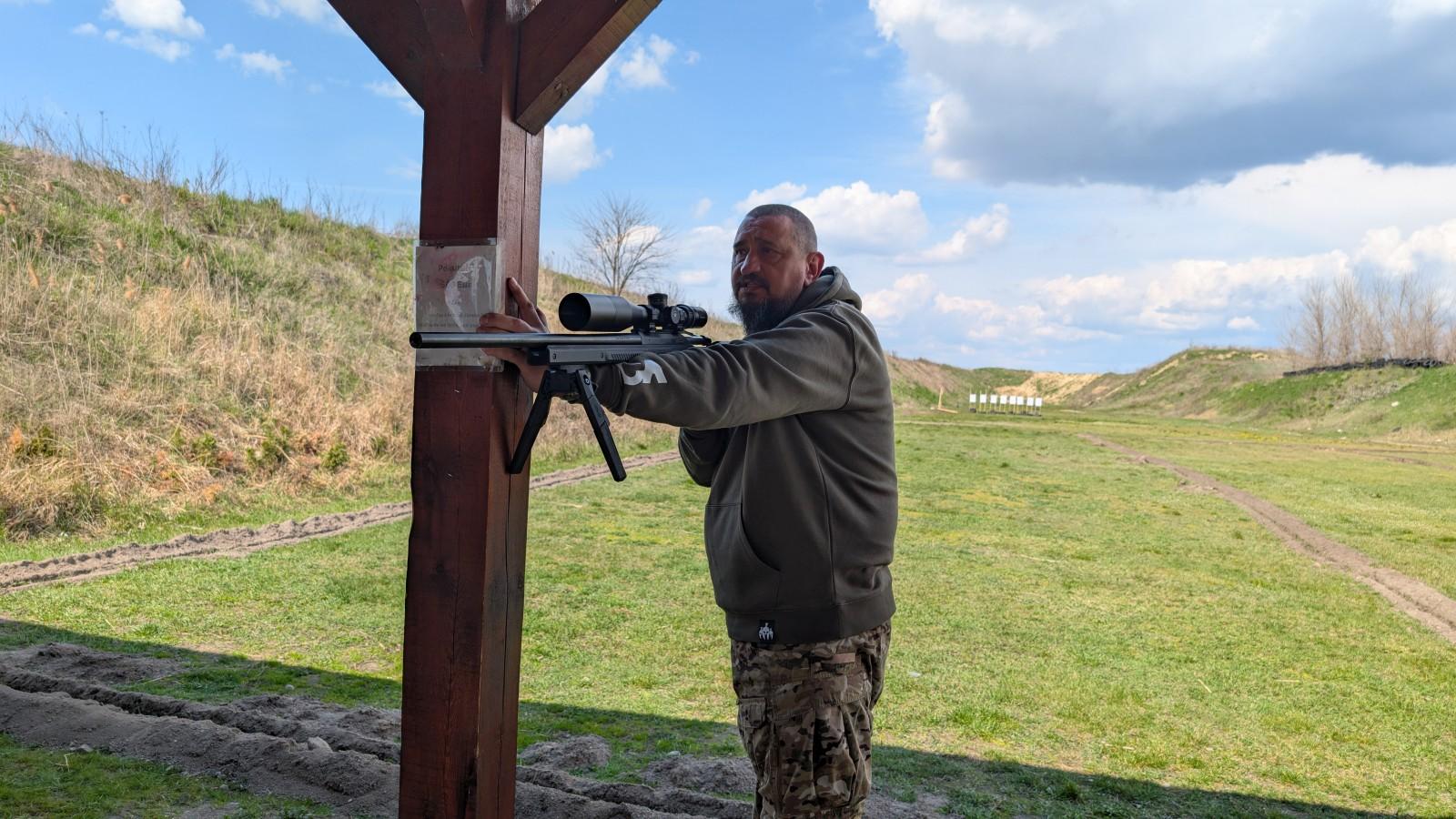
After sitting, we move to standing positions. Again, there are a few positions demonstrated. We, the participants, successfully manage this as well.
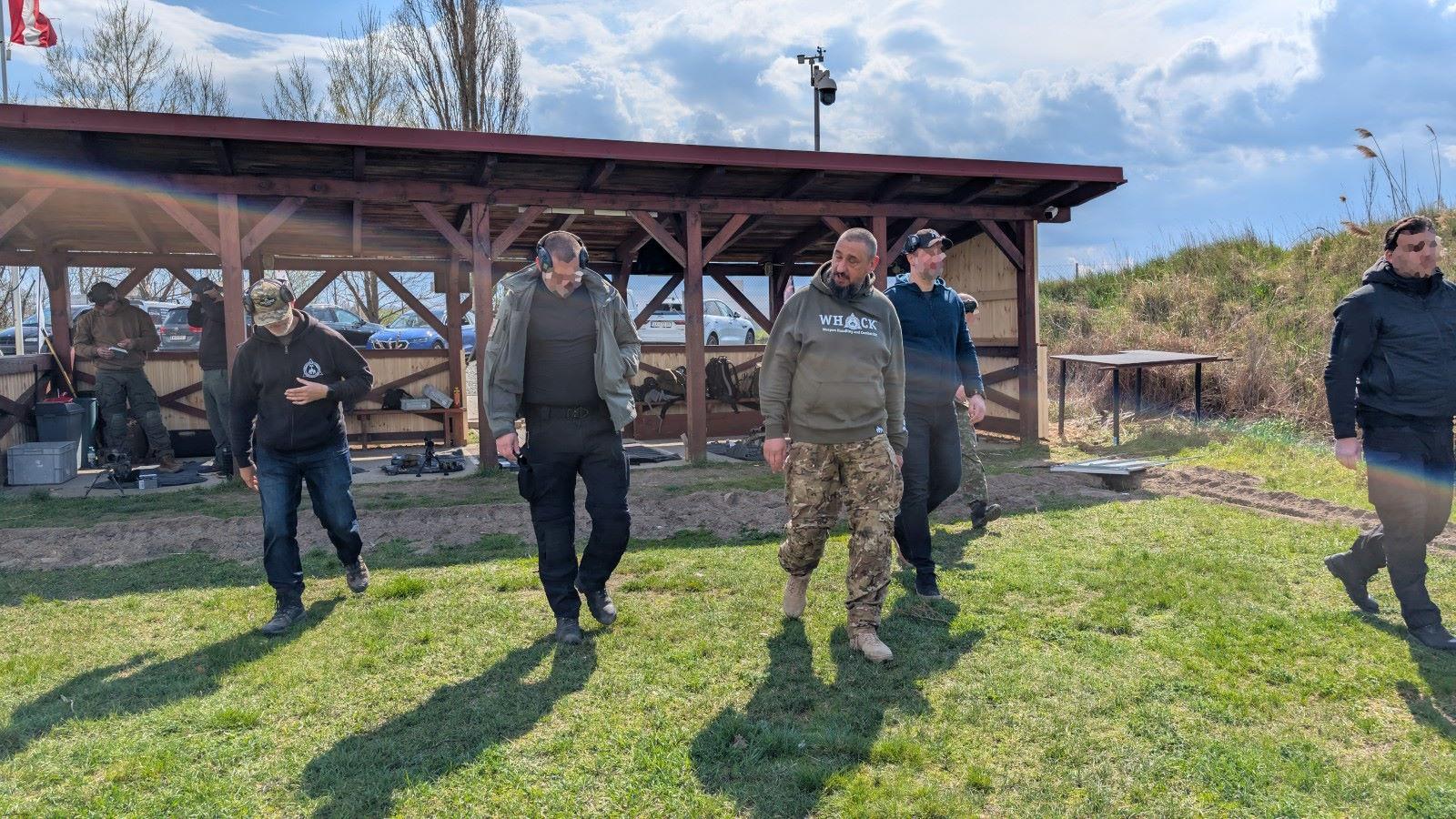
Up to now, everything has been at 100 meters. Now that we’ve covered the different shooting positions, it’s time to move the targets further away.
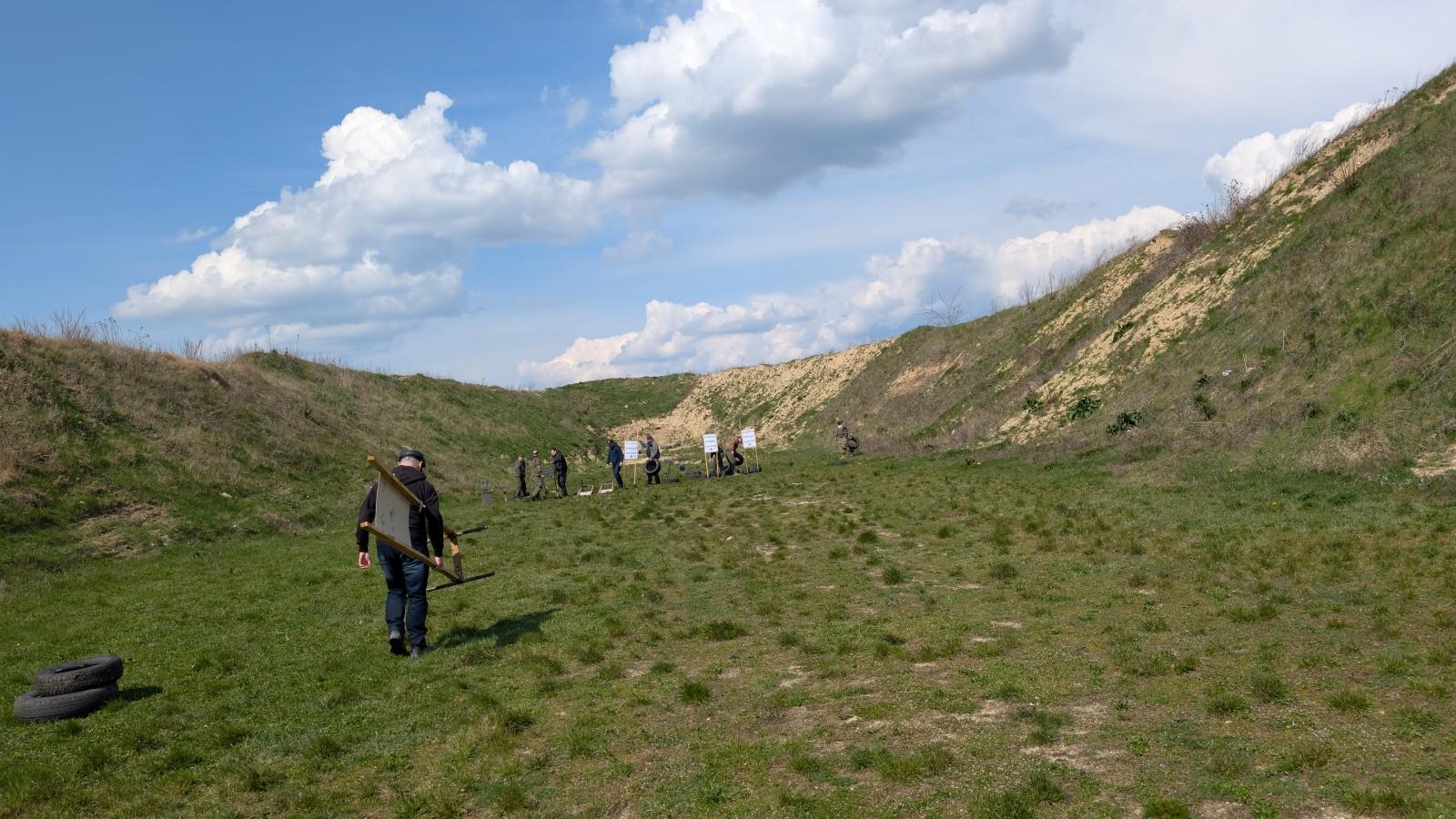
We essentially create a course. Targets at 100 meters, 200 meters, and 250 meters. Paper and steel targets.

Now the real fun begins. First, there are exercises to hit the new distances. Once, by adjusting the reticle correctly to the new distance. Then, you should leave the zero at 100 meters and compensate accordingly in the reticle.
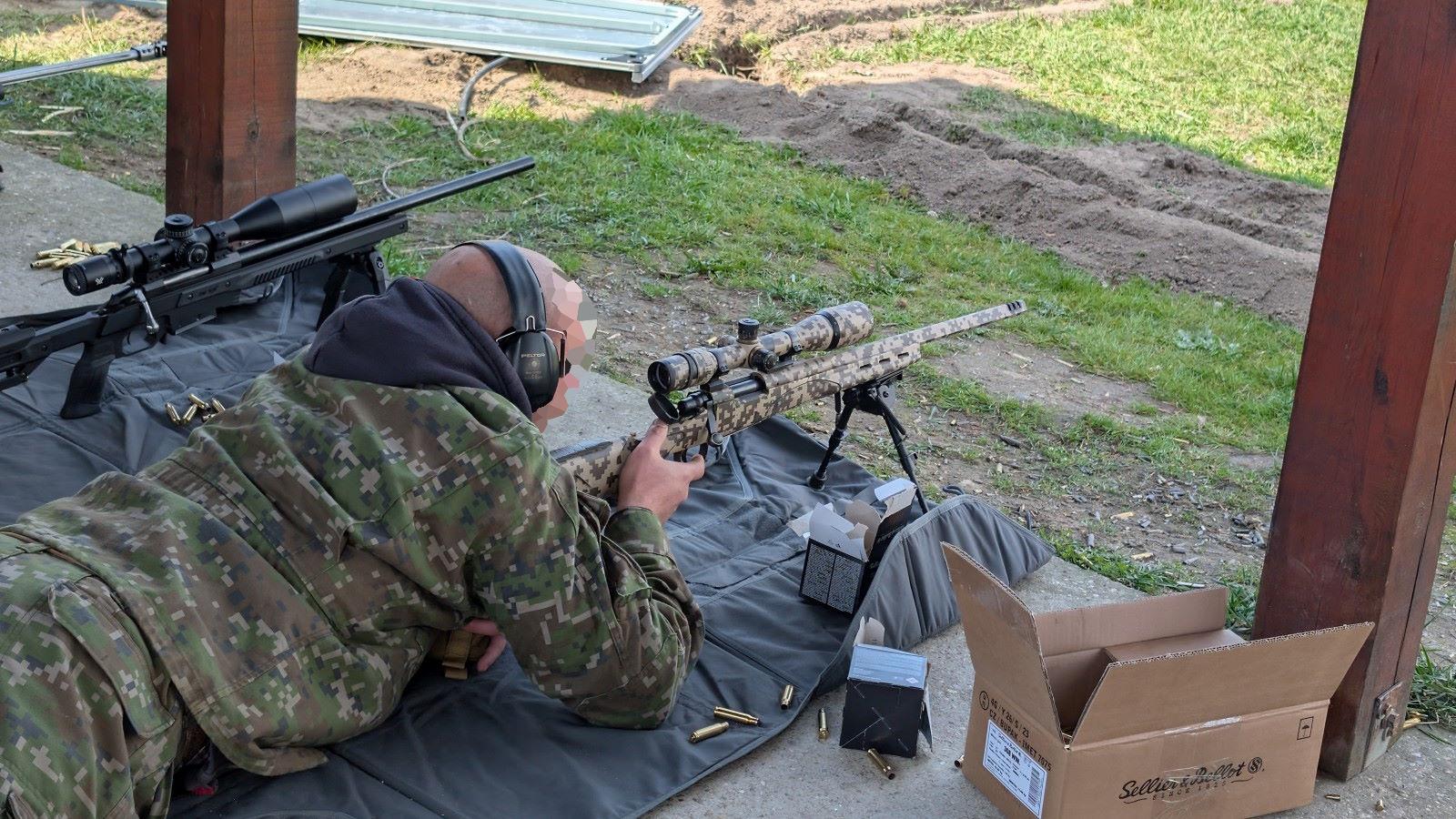
Also interesting is the exercise where you leave the reticle set at 250 meters and then shoot at 250 meters, 200 meters, and 100 meters in one go. This forces you to hold the reticle beneath the target to hit at the closer distances. It makes sense, but we’ve never done it like this before.
Michal has a special final exercise for us. Following his instructions, we adjust the reticle, and now the impact point is at 100 meters, essentially at the bottom-right of the center. Depending on the reticle, this exercise was more difficult for some than for others.

The day went by far too quickly, and it’s already over. We receive a certificate from Michal and the note that this is just the beginning. The next course will be in Jasna at distances of up to 500 meters.
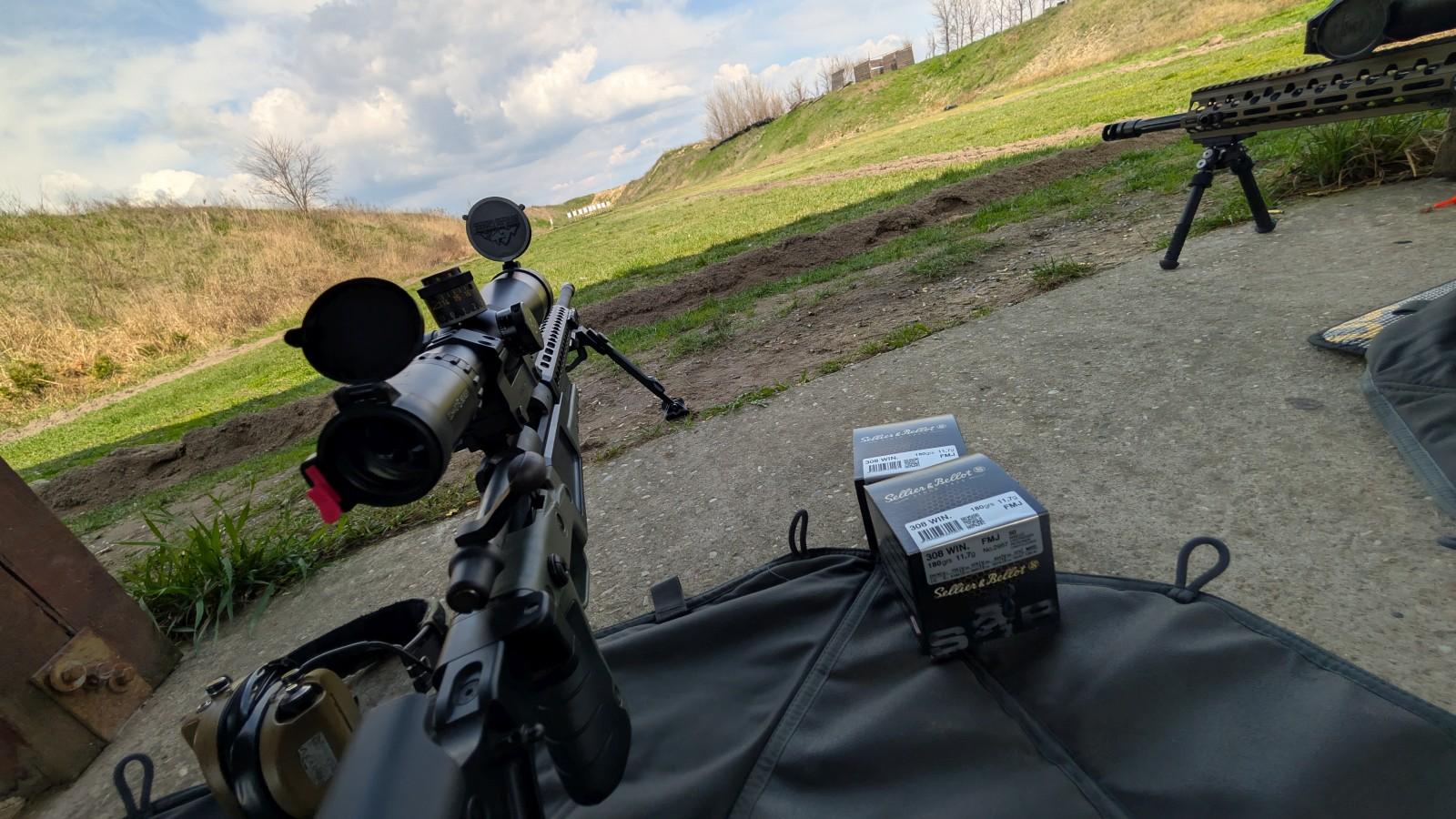
We are typically AR15 shooters, involved in dynamic competitions. Could we still take something from this? Yes, definitely. The precise trigger pull and some shooting positions are incredibly helpful for the 300-500 meter distances we regularly encounter in competitions. The entire topic of ballistics was also very interesting and taught in an engaging way.
If you also want to dive into the sniper topic, you can find HERE all the sniper courses offered by TCA.
SPARTANAT is the online magazine for Military News, Tactical Life, Gear & Reviews.
Send us your news: [email protected]
Ad
similar
Get the weekly SPARTANAT newsletter.
Your bonus: the free E-Book from SPARTANAT.

